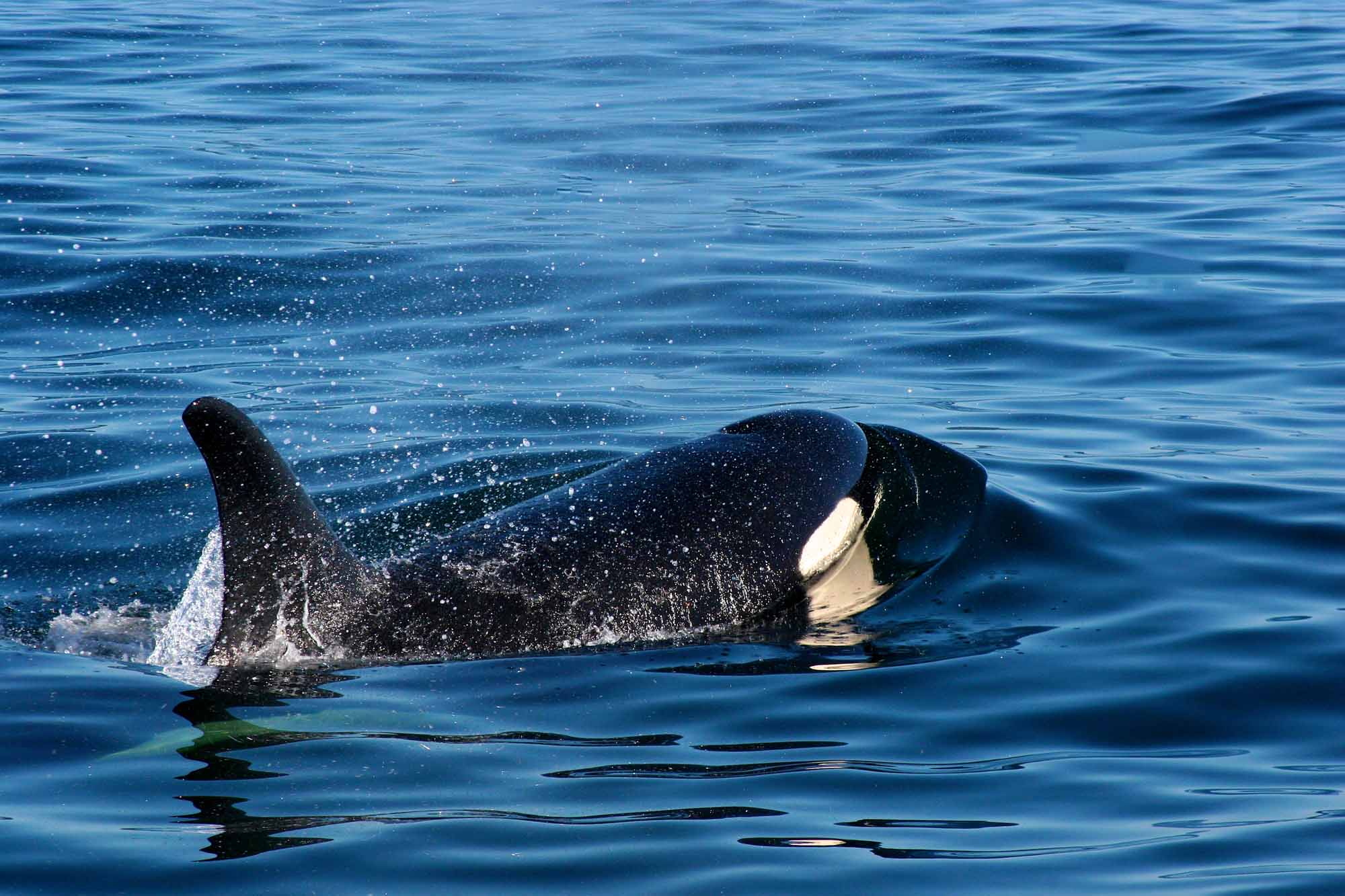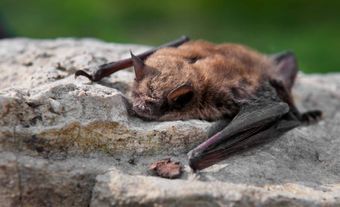Cetacea, order of mammals consisting of whales, dolphins and porpoises. It includes about 80 living species, with worldwide distribution. Highly specialized anatomy and physiology allow cetaceans to maintain a fully aquatic existence while breathing air.
Description
Anatomical modifications of modern cetaceans include short neck with vertebrae usually fused; fusiform (cigar-shaped) body; body hair generally absent or reduced to isolated whiskers on the jaws, chin and rostrum (part of skull in front of eyes); horizontal caudal (tail) flukes supported by cartilage; hindlimbs absent or reduced to small bones embedded in the flank musculature; and forelimbs flattened to flippers with bony digits enclosed in a common integument.
Most modern species have a single fin on the back. Immediately below the epidermis is a blubber layer, developed in many modern species to provide thermal insulation and storage for lipids (fats). The cetacean skull is "telescoped," eg, the bones of the rostrum extend over and under the braincase. Except in the sperm whale (Physeter catodon), the external nasal opening is positioned on the upper rear of the skull and allows quick, efficient breathing at the air-water interface.
Concealment of genital, mammary and excretory organs within the body outline contributes to streamlining. There is no external ear; a pinhole opening leads to a pinched-off ear canal. Nevertheless, hearing is well developed; sound plays a key role in communication, navigation and object detection.
Cetaceans are classified in 3 suborders: Archaeoceti, Mysticeti and Odontoceti.
Archaeocetes
, now extinct, were comparatively primitive: their skull bones were not telescoped; they had milk teeth, shed and replaced by permanent teeth; they had reduced hind limbs, probably protruding externally. They were serpentlike animals up to 20 m long, with a full battery of teeth which made them formidable predators. Their descendants are the mysticetes (baleen whales) and odontocetes (toothed whales).
Mysticeti
Living mysticetes comprise 3 families, 6 genera and at least 10 species (in Canada, 3 families, 5 genera, 8 species). Their paired, external fleshy nostrils (blowholes) distinguish the mysticetes from the odontocetes, which have a single blowhole. Feeding adaptations also differ. The vestigial teeth of mysticetes are lost before birth, and replaced by baleen (whalebone), hornlike modified skin tissue rooted in and suspended from the palate. Baleen consists of many fibrous tubules packed together to form plates, arranged in a row on either side of the mouth. The ends of the plates become frayed and interwoven, creating an efficient sieve for trapping small fish and Zooplankton.
Odontoceti
Living odontocetes, 7 families, 31 genera and about 70 species (in Canada, 5 families, 19 genera, about 25 species). Most odontocetes have undifferentiated, functional teeth. Food passes unchewed through the esophagus and into a specialized, multichambered stomach where digestion occurs. The kidney is divided into many small lobules or renules (300-3000 per side).
Cetaceans usually pass normal mammalian urine, but there is some evidence that dolphins can, for short periods, excrete urine with an unusually high salt concentration.
Reproduction and Development
Most cetaceans are seasonal breeders; the timing of peak breeding varies according to a species' or population's ecology. Most mysticetes migrate annually between summer feeding grounds and winter breeding and calving grounds; some odontocete populations are relatively more sedentary. Gestation lasts for a little less than one year in most species. Sperm whales have a 16-month gestation period and in some other odontocetes it exceeds one year. Cetacean females rarely carry more than one fetus to term; energy requirements make it difficult for a female to rear more than one calf in the same season.
Calves are born tail first and are well developed at birth. Birth and nursing take place underwater. Mysticetes wean calves after 7-10 or more months; some odontocetes, much later at 18 or more months. Thus, except for a few smaller species, the interbirth interval is at least 2 years.
Swimming and Diving
Maximum swimming speeds range from at least 30 km/h in some porpoises to 37 km/h or faster in the large rorquals (eg, sei whale). Diving capabilities vary greatly by species. Sperm whales and certain beaked whales often submerge for over an hour. Cases of entanglement in submarine cables show that sperm whales reach depths of at least 1100 m; other evidence points to even deeper dives. Baleen whales generally do not dive for longer than 20-30 min, although the ice-adapted bowhead (Balaena mysticetus) is known to dive for over 30 min. Dolphins and porpoises normally surface at intervals of 5-7 min or less.
Social Structure
The only serious, nonhuman predators of cetaceans are large sharks and killer whales (Orcinus orca). The latter are known to attack virtually all species of marine mammals, including the blue whale (Balaenoptera musculus), the largest cetacean. Strong, lasting social cohesion within killer whale pods (extended family units) facilitates group hunting. Odontocetes are observably gregarious, and many are thought to have complex social structures. Most mysticetes are thought to be only moderately gregarious, although their long-range vocal communication signals may permit more co-ordinated activity than is evident from casual observation.
Vocalization
Only odontocetes have been proven capable of echolocation. Sperm and killer whales and some dolphins have the ability to stun and paralyze fish and squid with bursts of sound. The 2 major types of sounds made by cetaceans are low-pitched moans, screams, whistles and grunts, probably used for social communication, and high-intensity clicks, with frequencies ranging up to 200 kHz (about 13 times the upper frequency of human hearing capability), used for discrimination and navigation.
Senses
Excellent vision has been demonstrated experimentally in some small odontocetes; however, several kinds of freshwater dolphins (platanistoids) have reduced eyes - Ganges and Indus dolphins (Platanista gangetica, P. minor, respectively) are nearly blind. Cetaceans have well-developed taste buds, but chemoreceptor organs are reduced (Jacobson's organ of mysticetes) or absent (odontocetes).
Evolution and Phylogeny
The many important anatomical differences between the 2 suborders have been sometimes interpreted to reflect different terrestrial ancestries. However, an increasingly well-documented fossil record of Archaeoceti shows this group to be sufficiently diverse to have given rise to both squalodonts (early odontocetes) and agorophiids (early mysticetes). See also whaling.

 Share on Facebook
Share on Facebook Share on X
Share on X Share by Email
Share by Email Share on Google Classroom
Share on Google Classroom







